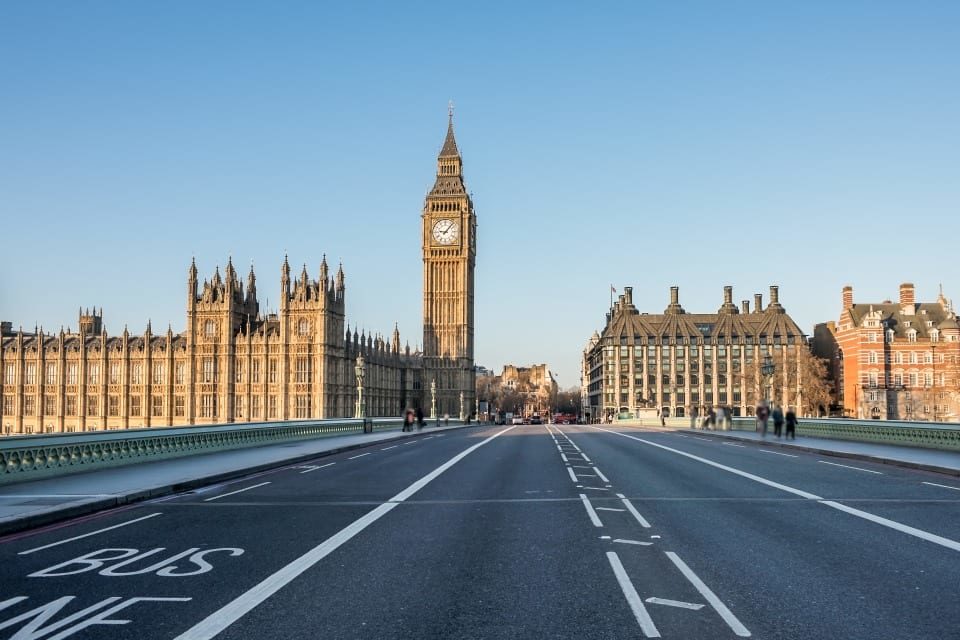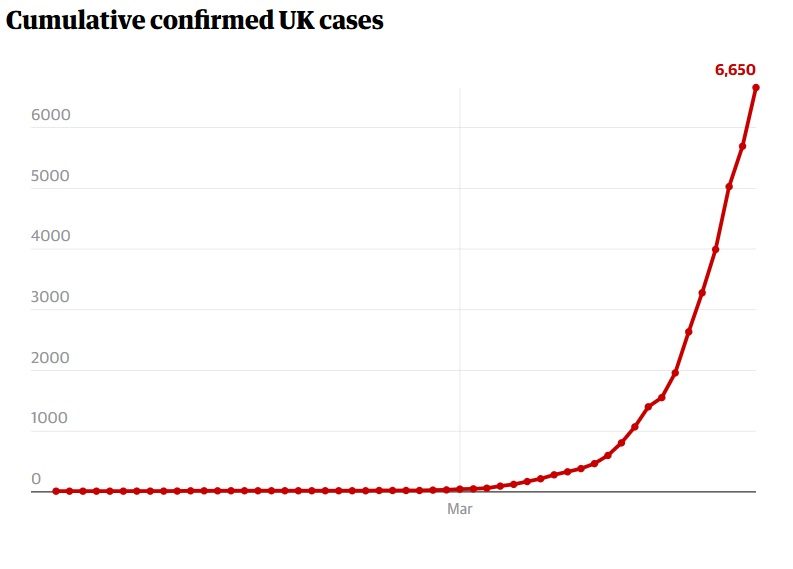What do the new restrictions involve?
In brief: an Italian-style lockdown to force people to stay at home beyond a small range of very limited circumstances. Under the terms explained by Boris Johnson in his TV address, people will be allowed to leave home only for the following reasons:
- shopping for necessities, as infrequently as possible;
- one form of exercise a day, such as running or cycling, alone or with household members;
- for medical or care needs, for example to help a vulnerable person;
- travelling to and from work, but only if you cannot work from home.
What enforcement action will there be?
Police will be able to enforce the rules, and impose fines on people who do not abide by them. Authorities will force the closure of all shops selling non-essential goods, including hair and nail salons, and all markets apart from food markets. Also closed will be libraries, outdoor gyms and playgrounds, and churches or other places of worship. Hotels, B&Bs, campsites and caravan parks will also be closed, apart from to permanent residents or key workers. All public gatherings of more than two people will be banned, except if those people share a household. Also prohibited are all social events such as weddings and baptisms, although funerals will be permitted to take place.
How long will it last?
At least three weeks. Johnson said that after that point, the government will relax the rules "if the evidence shows we are able to" - but this is by no means certain.
What is this meant to do?
The hope is to severely limit the scale of physical and social interaction, and thus slow the spread of the coronavirus so that the growth in cases does not overwhelm the NHS and lead to mass deaths. As Johnson put it: "Without a huge national effort to halt the growth of this virus, there will come a moment when no health service in the world could possibly cope."
Will it work?
This remains to be seen - and given the time lag between infections and people becoming critically ill, it will be up to two weeks before any benefits are realised. On Monday, Italy recorded a slight reduction in the number of coronavirus deaths, two weeks after it introduced a national lockdown. So the UK can expect an exponential growth in infections and deaths first, before - hopefully - the curve flattens.
What has been the situation up till now?
There has been a gradual increase in restrictions, going from ministers urging people to work from home if possible and avoid pubs and other crowded places, to schools and nurseries being closed, and then on Friday the forced closure of pubs, clubs, restaurants, gyms and other communal businesses. However, the information on physical distancing has thus far been framed as advice, with Johnson stressing the desire of people to be out of doors.
What was the background to the move?
Opposition parties and, increasingly, some Conservative MPs have been pushing for tougher restrictions on people's movement, especially following much-shared photos over the weekend of crowds in national parks and elsewhere. Speaking in the Commons on Monday, the former health secretary, Jeremy Hunt, said: "We must move to lockdown rules now that ban non-essential travel. It's time not just to ask people to do social distancing, but enforce social distancing rules."
What's happened in other countries?
Many other European countries have taken a lockdown approach, generally a week or so before the UK. Italy saw a ban on almost all movement in the north of the country which was extended, and then intensified, with only a selection of vital shops and businesses allowed to open, and police checking on people's movements. Spain and France have taken similar measures.
The most extreme approach was taken in China, where authorities essentially sealed off 11 million people in Wuhan, where the virus first began spreading, before extending the quarantine zone to take in more than 50 million people. People were kept in apartment blocks, with visitors and almost all outside movements banned. Other measures included compulsory temperature tests, and the placing of those feared to be ill in isolation.





Will they? Our massively understaffed, massively under-resourced, weedy, non-sexist, non-racist, three-foot tall vegetarian Nancy boys in blue.
"Help!!! Police brutality!!!"
LOL.